The United Kingdom and Germany have signed a joint €450 million contract to acquire the latest generation of M3 amphibious bridging and ferry systems from General Dynamics European Land Systems (GDELS).
The deal was arranged through the Organisation for Joint Armament Cooperation (OCCAR).
The “Wide Wet Gap Crossing Programme” will replace equipment first introduced in the late 1990s and expand NATO’s capacity to deploy and manoeuvre heavy vehicles across rivers and other obstacles in both combat and disaster relief operations.
The upgraded systems, based on the latest M3S model developed for Sweden, will feature enhanced reliability, improved safety, and a modernised human-machine interface. They will also be fully interoperable with existing NATO bridging systems, including the SRB, FSB and IRB pontoon bridge families.
According to GDELS, the M3 remains the fastest amphibious bridging system in NATO service and can be deployed within minutes to transport main battle tanks and other heavy vehicles across wide rivers. The company said the new configuration offers greater flexibility and reduced through-life support costs, while enabling full interchangeability between the UK and German fleets.
Dr Thomas Kauffmann, Vice President and Chief Sales Officer of GDELS, said “the new M3 will provide Germany and the UK with state-of-the-art floating-bridge capabilities enabling unhindered manoeuvrability for all NATO vehicles.”
Dr Christian Kauth, Vice President and Managing Director of GDELS Bridge Systems, added that production at the firm’s Kaiserslautern site is being expanded to meet growing demand. “We are proud to continue delivering the M3 from Kaiserslautern, where we are investing heavily in new production capabilities,” he said.
The M3 system has been used extensively across NATO for decades and is capable of operating in a range of conditions, from arctic to tropical environments.


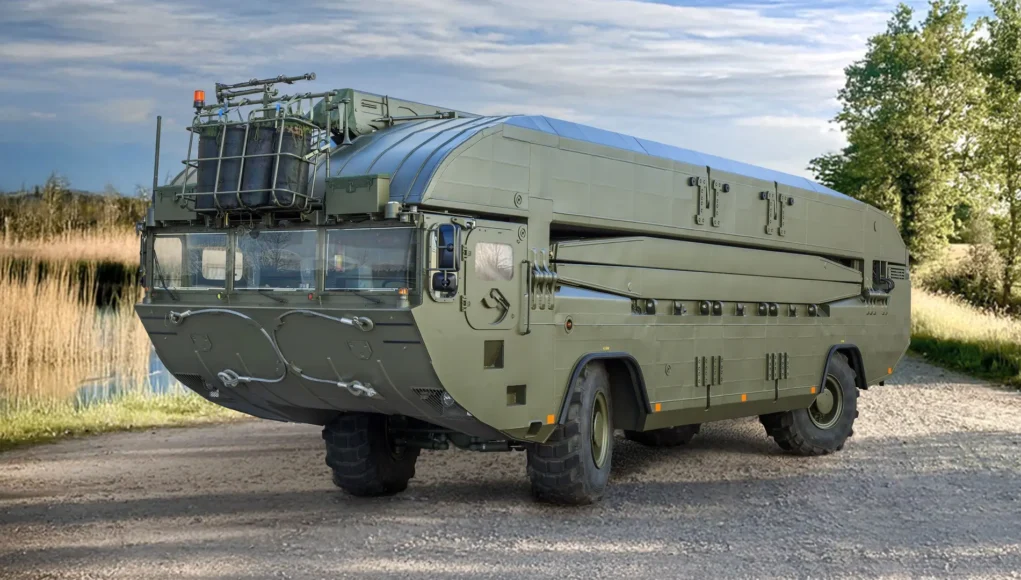



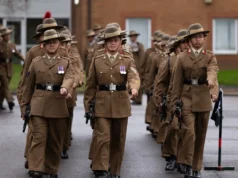

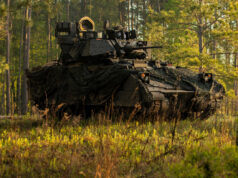
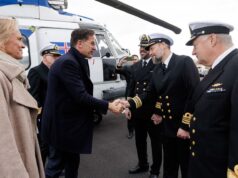


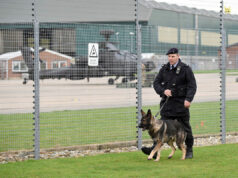

Extensively across NATO?
I thought this capability was only bought by a few NATO nations.
Whatever, good they’ve finally actioned Triton. Pity the Army intends to erode the wider RE AVRE capability at the same time!
Daniele, in NATO only UK and Germany have been significant users of original M3 and its predecessor M2. Latvia has ordered only 4 (in 2021) which only entered service this year. Sweden, only recently a NATO country, only started ordering in mid-2022 with first deliveries just a year ago in Nov 2024.
Great news , but with this level of co-operation on equipment acquisition it does make me wonder why the government are considering giving £6 billion of our money to the EU just to be able to bid for military contract . These current arrangements seem to be working very well .
Just watched a (2016?) YouTube video where several M3s were joined together on a fast-flowing river, to get a squadron of Leopard tanks across – in nine minutes!. Very impressive.
I wonder how this would work in a modern drone rich environment. Within seconds of you setting up, drones would have the target identified and artillery rounds incoming.
9mins has gone from being super fast and giving plenty of time a decade ago, to an enternity of risk.
Yes but massed drones are short range weapons ( 10km or so) and setting up a bridge close to a contested environment is risky in anyworld..
I would guess that would be entirely dependent on what is deployed along side it. Same if it was in an infantry or AV rich environment.
Very valid comment, it did not go well for Opfor in Ukraine when using equipment bridging. Did not last that long before it was essentially U/S. And as i recall that was not as a result of a particularly drone rich environ, more a case of good recce and effective use of artillery. Presumably, heavy support in the region and counter drone kit. Presumption however is risky.
It was during Russia’s Slovyansk offensive on the Sivirsky- Donetsk River. The ZSU had effectively looked at the site and determined that it was the most obvious bridging site, and presighted their artillery on it. So when the Russians attempted to cross the ZSU was waiting for them. In that situation, it doesn’t matter if it’s a drone rich environment, or anything, you can put a guy in a bush with a landline and call fires in.
More prosaically you can look at the Kursk offensive, when the Ukrainians tried to cut the Russian forces off at the Seym River, and despite drones identifying multiple Pontoon bridges, and modern PGM’s being used to target them, the Ukranians where not able to cut the Russian forces off south of the river by fires alone. Same goes for the Kherson offensive, where depsite the Antonov Bridge and the accompanying Pontoon being known to the ZSU, and frequently targeted as the only supply routes for the Russians, they where never fully shut down. (And then of course there’s the Kerch Bridge).
Setting up a bridge is risky, but they are also not easy targets.
Steve, 9 minutes to build a bridge across a fast-flowing river is still super-fast. Nothing else matches that figure. Every element of the deployed field army is vulnerable to the drone threat, including soft-skinned vehicles and dismounted men and not just AFVs and bridging vehicles. We cannot just say ‘we’re all doomed’, pack up our kit and go home. That doesn’t get us anywhere. The UK is spending £billions on countering drones, and some anti-drone equipment, is being fielded now.
Today it was reported that the RAF Regiment is deploying anti-drone teams to Belgium following reports of Russian (tbc) drones near Zaventem and Liege airports in Belgium.
Not saying it’s not super fast and it’s the only way to achieve the objective, it’s just interesting when you consider how much more risky it would be now Vs a decade ago.
1) Drones do not strike within seconds.
2) Drones do not routinely carry payloads big enough to take down a floating rig.
Kill chains are not nearly as fast as you are pretending.
Thats mis understing of how drones work. There are strike drones but they are in the minority. Their main task is constantly survallince of the battlefield to give commanders info on where attacks and targets are located. Their nature means within seconds the bridging equipment would be identified as a valid target and even strike drones or artillery called in. The survallince is of them is far more dangerous than the attack side.
Time will tell if military planners can solve the problem. For sure there is a lot of data coming out of Ukraine and Ukraine is feeding that info to NATO.
Yeah sorry, no I’m not taking a lecture on how drones work from you.
They are not persitant. They do not give 24/7 views of every part of the battlefield. You are labouring under some really massive misapprehensions.
That’s fine,.different views is understandable, we don’t have the full picture as neither side gives that. Ukraine commanders have publically stated the reason they can’t mount a new offensive like in the first years of the war is because the whole battlefield is a web of hundreds of thousands of drones. They might not be 100% persistent but they are close, especially when the battlefield is so restricted by mine fields.
I saw this article and wondered…
What will happen to all the bridging equipment Germany and the UK already has?
Is this ‘upgrade’ really necessary?
Considering constant government ‘thrift’, could the money for these upgrades be used elsewhere?